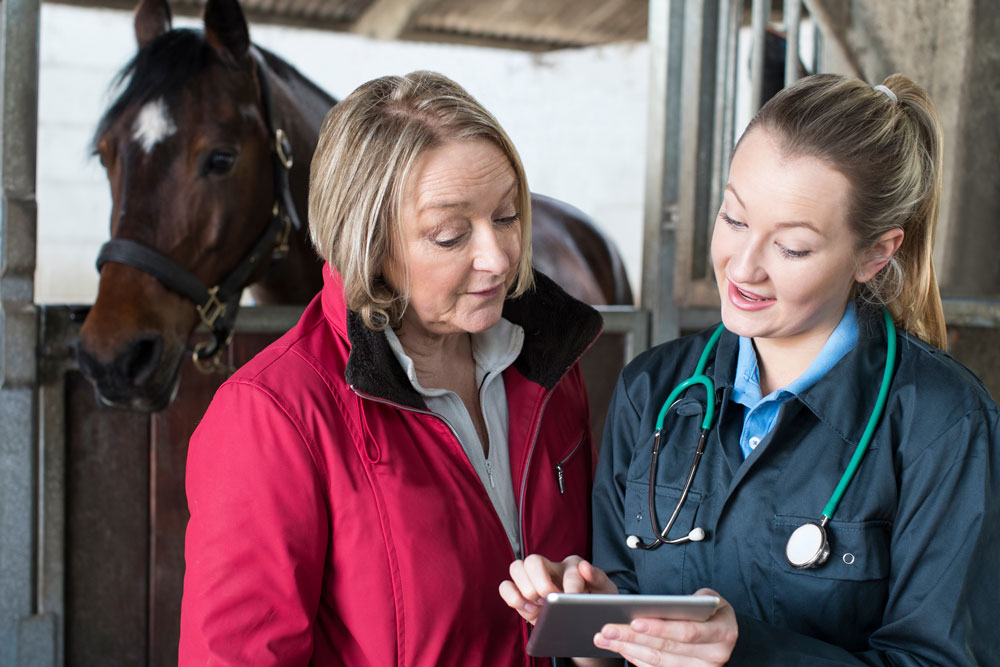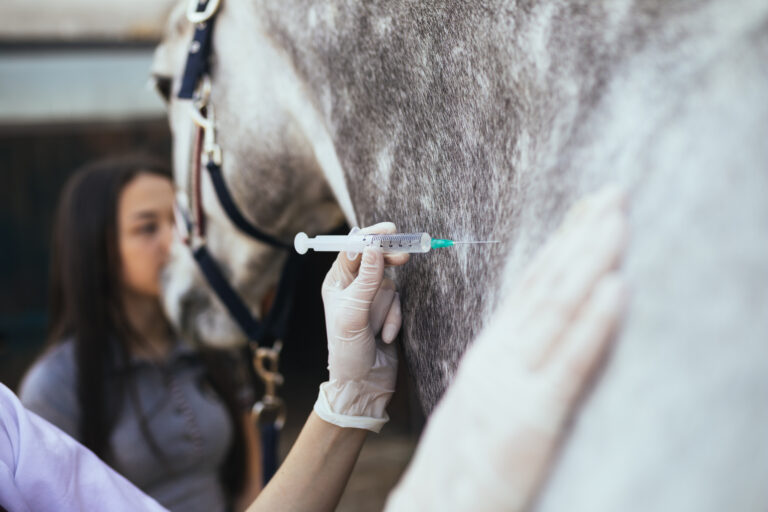
Veterinary practice information management requires quality software that can improve your practice’s performance, patient care and client relationships. For many years, software systems with features specific to equine practice needs were not available, and practices made do with programs designed for companion animal vets.
The unique needs of equine practices—horses with multiple owners, frequent ownership changes, the prevalence of ambulatory work, large barn settings where multiple horses receive treatment on the same day, sectors like reproduction where services might be provided daily for weeks to generate a single invoice, absentee owners, etc.— create a niche market for equine-specific management software.
Does It Work in the Field?
While all practice management systems can manage an appointment schedule, as well as create invoices and records of services and treatment, the systems vary widely in true functionality for an equine practice.
Consider the spotty cellular service in some areas of the country. An ambulatory practitioner who cannot access records on “the cloud” or seamlessly synchronize the software with the office regularly during the day might be frustrated by the inaccuracies and inefficiencies that arise.
Some equine practices still create paper records and invoices in the field that are then entered by staff members into a computer system back at the office in order to have electronic records. While this was at one time the most functional way to manage information under certain conditions, it is quite inefficient and costly.
The best management software systems for equine practice provide for ambulatory practitioners to work when they do not have an internet connection, allowing both searching in the database and entering new data. In these cases, the laptop or tablet must then be synchronized later with the main system at the office to download data entered during the day.
Under the best conditions with modern software systems, data are synchronized automatically whenever cellular or internet service is available. Many newer model trucks offer a factory-installed wifi hotspot, making mobile management software much more functional.
Reports and Communication
The objectives of a veterinary practice management system are to increase practice efficiency and productivity, provide better patient care and client experience, and allow easier assessment of practice growth and financial parameters.
When shopping for practice management software, look for functions such as automatic invoice generation as you create a medical record, laboratory results that can seamlessly be added to patient medical records and templates that remind you to recommend all appropriate services for certain appointment types.
There should also be drop-down menus that help you remember to charge for all services that you performed, as well as entry fields for owners and patients that allow both registered names and “barn” names for horses, multiple owners, and agents’ and trainers’ names.
More satisfying client experiences will result from software that allows you to provide attractive, intuitive invoices and copies of medical records along with easily accessed medical histories and laboratory results.
Of great value are the reports that can be generated from the data collected within the management system. You want production reports that can be sorted by doctor, type of service (e.g. laboratory, dentistry) and specific service or product.
The system should track your accounts receivable with aging, as well as manage your inventory.
Before You Buy
No matter how carefully you research available software packages, sometimes your expectations are not met. In order to avoid this outcome, talk to other practices using the system you are considering, finding out as much about their experience as you can.
Once you decide on a practice management software package, expect the transition to the new system to be onerous. Sometimes there is difficulty in bringing in data from your old system without corruption. Rarely, the new software has “bugs” that must be addressed.
The hardest part is simply learning something new while working in a busy practice with all of the normal demands. In a few weeks or months, if you have chosen well, you will be happy you made the change.




